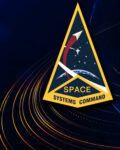At the Association of the United States Army (AUSA) 2025 exposition in Washington D.C., Oshkosh Defense unveiled a new configuration of its eJLTV-derived eXpeditionary Mobile Autonomous Vehicle (X-MAV), equipped with a land-based launcher for the Tomahawk cruise missile. This development signals a potential shift in how long-range precision fires could be deployed by both U.S. forces and allied nations such as Ukraine.
Oshkosh X-MAV Platform: Modular Strike from a Tactical Chassis
The X-MAV is based on the hybrid-electric Joint Light Tactical Vehicle (eJLTV) architecture developed by Oshkosh Defense. Designed for modularity and expeditionary deployment, the platform has been demonstrated in multiple configurations since its debut in late 2023. At AUSA 2025, the company presented a variant equipped with a twin-canister launcher for the Raytheon-built Tomahawk Land Attack Missile (TLAM), offering ground forces a mobile deep-strike capability previously limited to naval platforms or large fixed systems.
The launcher module appears to draw design cues from the U.S. Navy’s Mk41 Vertical Launch System but is adapted for horizontal ground launch. The vehicle’s compact footprint—roughly comparable to standard JLTV dimensions—suggests it could operate in dispersed formations or austere environments with minimal support infrastructure.
Tomahawk on Land: Strategic Implications of Ground-Launched Cruise Missiles
The integration of the Tomahawk onto a tactical wheeled chassis marks a significant evolution in U.S. and allied land-based strike doctrine. Since the collapse of the Intermediate-Range Nuclear Forces (INF) Treaty in 2019, there has been renewed interest in deploying conventional ground-launched cruise missiles (GLCMs) within ranges between 500 km and 2,500 km.
The Block V variant of the Tomahawk—currently fielded by the U.S. Navy—features upgraded navigation systems (including GPS/INS with anti-jam capability), improved targeting flexibility via datalink updates mid-flight, and an estimated range exceeding 1,600 km. Configuring this missile for road-mobile launch expands its strategic utility while complicating adversary targeting calculus.
While Lockheed Martin’s Typhon system already fields both SM-6 interceptors and Tomahawks on a trailer-mounted platform under Mid-Range Capability (MRC), Oshkosh’s X-MAV offers a lighter-weight alternative that may be more suitable for partner nations or forward-deployed forces operating under threat of counterstrike.
Ukraine as Potential Operator: Feasibility and Constraints
The appearance of this mobile launcher at AUSA has sparked speculation about its relevance to Ukraine’s evolving long-range fires capability. Kyiv has repeatedly requested longer-range munitions—including ATACMS and Storm Shadow/SCALP-EG—to target Russian logistics hubs and airbases deep behind front lines.
While no formal Foreign Military Sales (FMS) case exists yet for Tomahawks to Ukraine, several factors make such a transfer plausible:
- Strategic need: Ukraine lacks indigenous cruise missiles with ranges over ~500 km; imported systems would fill this gap.
- Platform mobility: The X-MAV’s tactical footprint aligns with Ukrainian emphasis on shoot-and-scoot survivability under drone surveillance and counter-battery threats.
- Export precedent: Australia has already ordered Block V TLAMs; Japan is also acquiring them under recent defense reforms.
- Political climate: Congressional support exists for expanding Ukrainian access to advanced munitions if escalation thresholds are met.
However, export controls under MTCR Category I restrictions—given TLAM’s range/payload class—would require high-level political approval. Additionally, integration into Ukrainian C2 networks would necessitate secure datalink protocols and targeting data pipelines compatible with NATO standards like Link-16 or national equivalents.
X-MAV vs Typhon vs HIMARS: Comparative Analysis
The emergence of multiple mobile long-range strike platforms invites comparison across capabilities:
- X-MAV + TLAM: Highly mobile; likely limited to two missiles per vehicle; ideal for dispersed operations; lower logistical footprint but unproven in combat deployment.
- MRC Typhon: Larger trailer-mounted system; carries both SM-6 and TLAM; integrated into INDOPACOM posture; higher payload but requires more support assets.
- M142 HIMARS + ATACMS/PrSM: Combat-proven; shorter range (~300–500 km); high availability across NATO partners; not capable of launching cruise missiles like TLAM due to launcher architecture constraints.
This differentiation suggests that X-MAV could complement rather than replace existing systems by enabling distributed deep-strike nodes within contested zones or allied territories lacking hardened infrastructure.
AUSA Showcase Reflects Broader Trends in Land-Based Precision Fires
The unveiling of this configuration at AUSA underscores several broader trends shaping modern artillery and missile forces:
- Tactical mobility meets strategic range: Bridging gaps between theater-level effects and unit-level maneuverability is now central to Western doctrine evolution post-Ukraine war lessons.
- Cruise missile proliferation among allies: As deterrence shifts toward distributed lethality concepts, more countries seek domestically deployable standoff munitions without relying solely on air/naval assets.
- Simplified COTS integration pathways: Platforms like X-MAV emphasize plug-and-play modularity using existing munitions rather than bespoke development cycles—a key factor for rapid fielding amid geopolitical urgency.
If further testing validates operational viability—including survivability against ISR/EW threats—the X-MAV+TLAM pairing may emerge as a flexible option not only for U.S. expeditionary forces but also as an export-ready solution tailored to partners facing peer threats across Eurasia or Indo-Pacific theaters.










